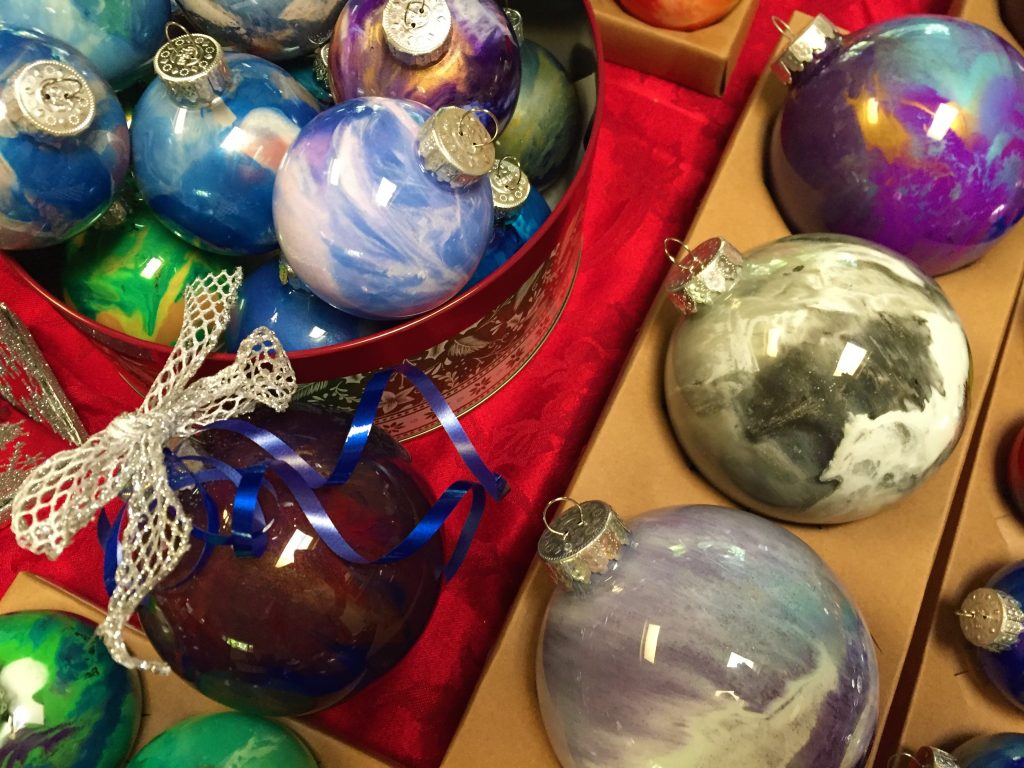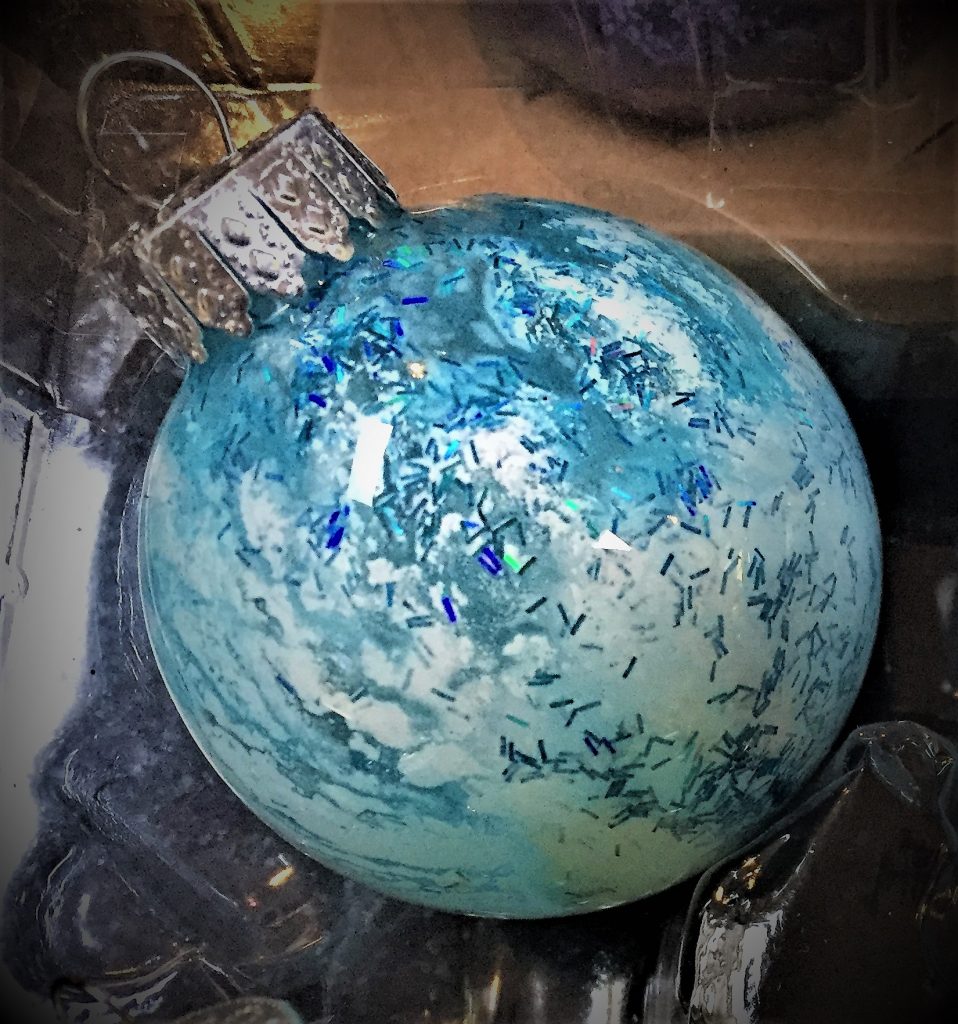 If you shake, flip, and yell obscenities at your ornament because no matter what you do you just cannot get the entire thing covered, here are some tips to fix the problem and troubleshoot why it happened to avoid wrist fatigue in the future.
If you shake, flip, and yell obscenities at your ornament because no matter what you do you just cannot get the entire thing covered, here are some tips to fix the problem and troubleshoot why it happened to avoid wrist fatigue in the future.
Not Enough Paint
When pouring paint onto a canvas it is easy to assess the minimum amount of paint needed to cover the surface using a simple rough calculation. In the case of acrylic paint pouring that means approximately 1 ml wet paint for every square inch of canvas.
Glass and plastic ball ornaments are round. It is hard to visual estimate paint required for a round surface so I will help you a little with the math. The diameter of commercial ornaments will be printed somewhere on the box. To find out the surface area you need to cover:
Multiply Pi (3.1416) with the square of the radius (r) 2.
Area = 3.1416 x r2
There are plenty of free, online calculators that can help you determine area, but most average sized ornaments (2.3″ diameter) will take about 3-5 ml of paint to cover the inside.
If you added too much paint, you can pour some off. I recommend waiting a day as you will be less likely to disturb the paint you do want to keep.
If you added too little paint, simply add a few drops more and reshake trying to reach the “bald” spots. I do not recommend ink for final coverage as it has “fast legs” and will want to move away from open spaces. Add one of the existing paint colors or even a new one to add fun accents.

Paint Not Sticking to Sides in Some Places – Unwanted “Crazing” Affect
Plastic and glass may seem smooth, but microscopically they do have a surface rough enough for paint to stick (at least in this case) to glass and plastic. Sometimes, you will encounter spots where the paint has separated and appears milky or “glazed” or you may even get a completely bare spot of glass where paint did not stick.
If the spot is completely bare (see-through glass) you probably just missed that spot during the flip. Flip again, trying to work paint into the spot. You may need to add more paint.
However, more often than not, when paint actually tries to take to the surface and then begins to pull away as in the case of the blue and white ornament in the example, it is because:
- All your paints were too thin.
- There was too much variability in the thickness between paints (i.e., some were thick, at least one was watery compared to the others)
- Too much paint (as excess paint drips down the insides it will pull other paint along with it.)
- You used silicon, alcohol, water, or a pouring medium. Try your making your ornament creations without these media as they all tend to make paint run faster and take longer to dry, and alcohol dehydrates and draws paints and inks.
- You used glitter glue (or glue). It just makes life harder so be sure to read my tips on working with glitter glue.
- Temperature and Humidity. Just as these can both make your paint fussier when pouring a canvas, these things can also affecting paint movement and dry time when painting ornaments.
Things that are likely NOT the problem:
You. This is art and supposed to be fun. I was so proud of my very first ornament throws — until three days later when the paints started pulling away.
Quality of Paint. I exclusively use inexpensive paints. I use the leftover stuff in half-dried up tubes. I have used clumpy stuff you would not dream of using for anything else. Work on your techniques – don’t go out and buy premium paints as there really is no need.
A Word About Acrylic Paints and Their Dry Time
Forget everything you already know about how fast acrylic paints dry on canvas because this simply does not apply to glass and plastic ornaments. Even untreated and straight from the bottle or tube, your paint may take days or even weeks to fully dry. Use this to your advantage to perfect your own techniques, but also bear in mind that while paint dries, each time you move a wet ornament you move a little bit of paint, too.
To cover bald spots the very first thing you should do is give it a little shake and see if you have any wet paint left inside that will move to the bald spots. If that does not work, simply add a little more paint.